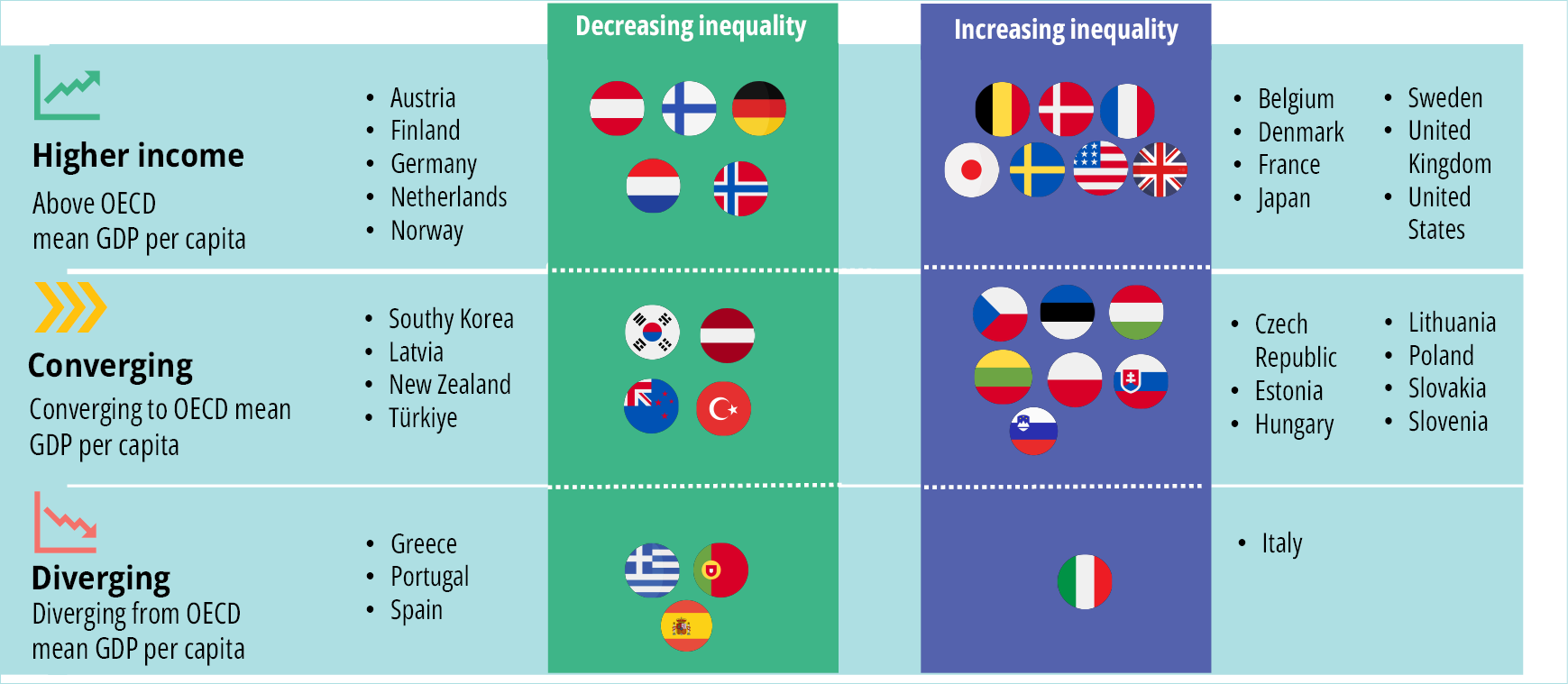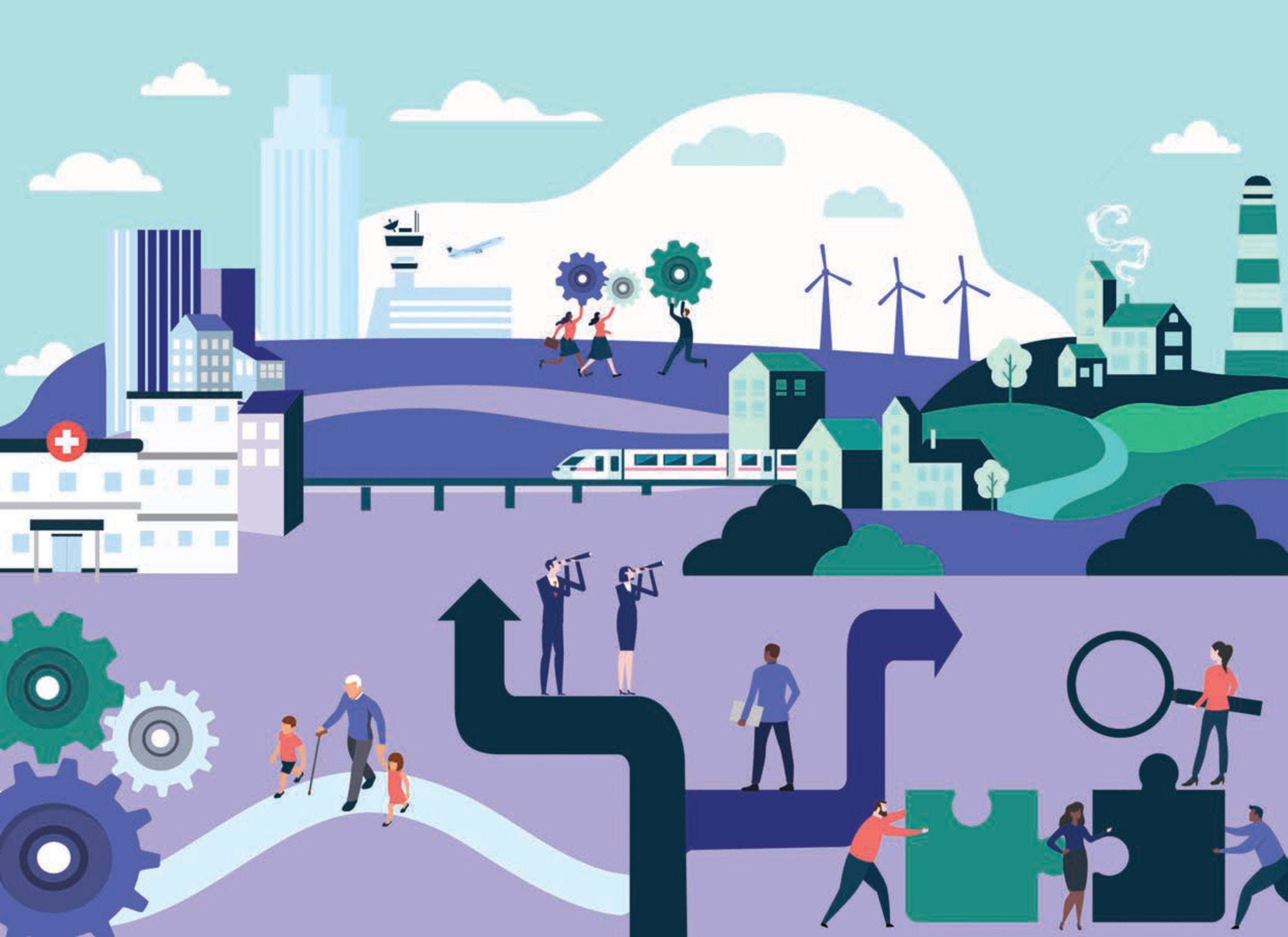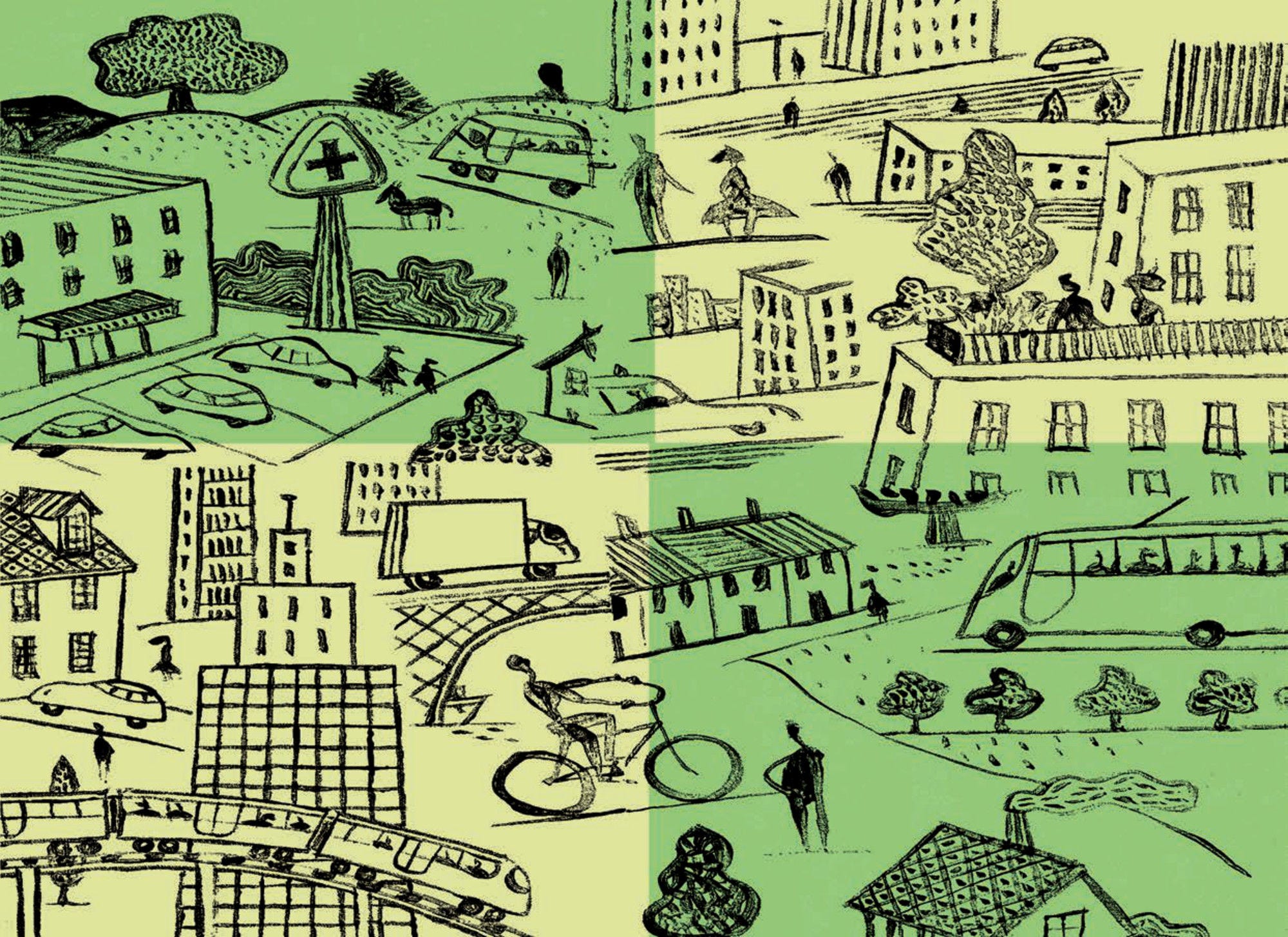Despite decades of convergence, not all regions within countries have benefited equally. In small regions (TL3), income inequalities have increased in over half of 27 OECD countries between 2000 and 2020. On average, in 2020, metropolitan regions had around 32% higher GDP per capita compared to rural, remote, and metropolitan adjacent regions. Governments need to strengthen and adapt regional development policies to tackle these gaps and enable all types of regions to reach their full potential.
Inclusion and equality in regions
Where you live matters. There are huge regional gaps in economic, social, and environmental outcomes, undermining life chances. These regional inequalities have grown in many OECD countries. Our work on inclusion and equality in regions looks at how governments support access to quality public services and infrastructure and boost competitiveness and productivity to unlock the potential of all types of regions and mitigate territorial disparities.

Key messages
Deep structural inequalities between places are stretching beyond economic outcomes, impacting well-being. Typically, metropolitan regions outperform across many areas, such as access to talent and skills, as well as services like health, education, and high-speed internet. These gaps are all connected. When public services and infrastructure are of poor quality, it is harder for lagging regions to attract and retain the people, skills and investment needed to break a vicious cycle of stagnation and decline.
Evidence is mounting on the broad-reaching costs of failing to tackle regional underperformance. These costs risk deepening geographies of discontent at a time where gaps in trust in government across regions are already large. Tackling longstanding regional inequalities and building regional resilience require better access to public services; better infrastructure to boost productivity and competition; better local skills development; better co-ordination of multi-level governance systems; and better subnational fiscal and strategic capacity.
Context
The longstanding geography of regional inequalities
Several decades of convergence between countries have not created equal opportunities for all regions within countries. Across large (TL2) regions (e.g., states, provinces, landers) within countries, regional inequalities have barely changed over the last two decades. More alarmingly, at the level of small (TL3) regions – which are better aligned to the geographies where people live and work – spatial inequalities in income have widened in many countries over the same period. Over half of 27 OECD countries with available data saw income inequalities between their small regions increase between 2000 and 2020.

Urban-rural gap in access to high-speed internet
Regional inequalities are reflected in several key drivers of economic opportunity. Data from regulators in 26 OECD countries show a persistent rural-urban divide in connectivity speeds. On average, one- third of households in rural areas lack access to high-speed broadband. These digital gaps prevent some areas from leveraging new opportunities in remote working and telemedicine that could help them compensate for a lack of physical connectivity to jobs and services, and entrepreneurship and potential investments.
Source: Speed test data from Ookia (2022)
Related publications
Related policy issues
-
Many places in the OECD face declining and ageing populations. This trend will continue. 14 OECD countries are expecting to lose population by 2040. In some regions this trend will be lasting and strong, with some projected to lose 20% or more of their population by 2050. Strong population shrinkage brings challenges that are best addressed at the regional and local level. For example, the costs of services and infrastructure provision rise per person, while quality and access risks declining. Affected regions typically struggle with labour and skill shortages, deteriorating real estate values, eroding tax bases and vacant buildings. The effects vary across regions: while people often migrate from rural to urban regions, some cities and towns are also affected by population decline. Local policies, delivered with national support, are necessary to foster well-being, economic and environmental sustainability. They need to cover government finances, infrastructure and service provision as well as multilevel governance.Learn more
-
Productivity and innovation underpin long-term economic growth and competitiveness of regions. They can help regions transition their economic structures and ensure sustainable wage growth for workers. Regions can follow different paths to unlock their potential, pushing the global knowledge frontier in some areas and focusing on uptake and diffusion of innovation in others. With effective governance, innovation policy can be a lever for place-based regional government. To help regions unlock their productivity and innovation potential, understanding the local drivers for productivity growth, the regional innovation system and its bottlenecks and the interplay with policies at different levels of government is key.Learn more
-
The winds of globalisation are shifting – countries and regions are testing policies to usher in the green transition, harness technology and secure supply chains. Yet the playing field isn’t always level, neither between regions in different countries nor for those within countries. Moving to solutions starts with a better understanding of a region’s position in the global economy, its regional assets and the policy levers available to make places more inclusive, sustainable and attractive.Learn more
-
Improving people's well-being requires sound evidence-based policies. We produce indicators for regions, cities and local areas in all areas of well-being. We promote international comparability, as well as the use of cutting-edge methods and new sources of data. Our network of experts advises on best practices for the production and use of high-quality statistics.Learn more
-
Shrinking Smartly and Sustainably flyerLearn more




